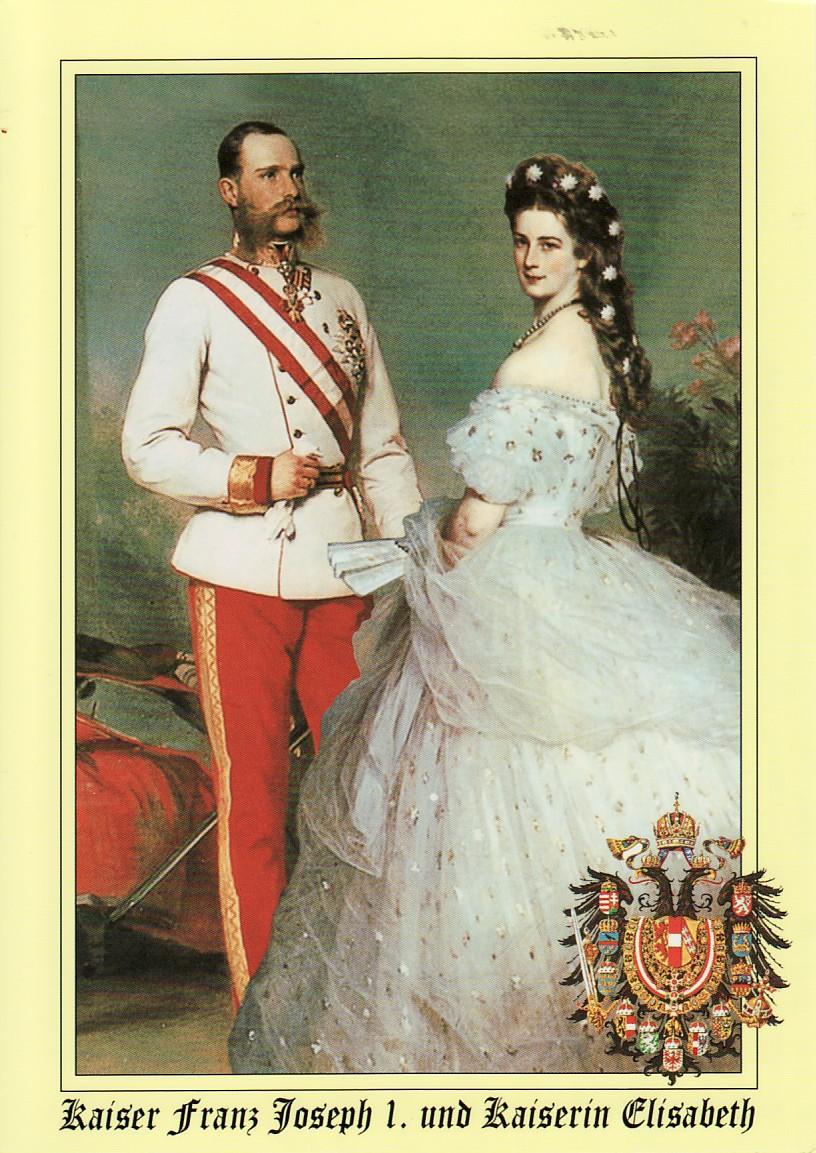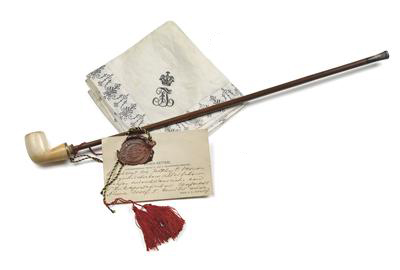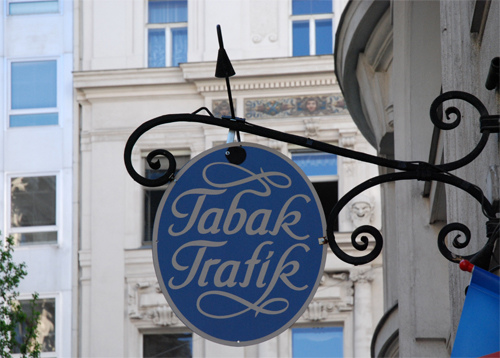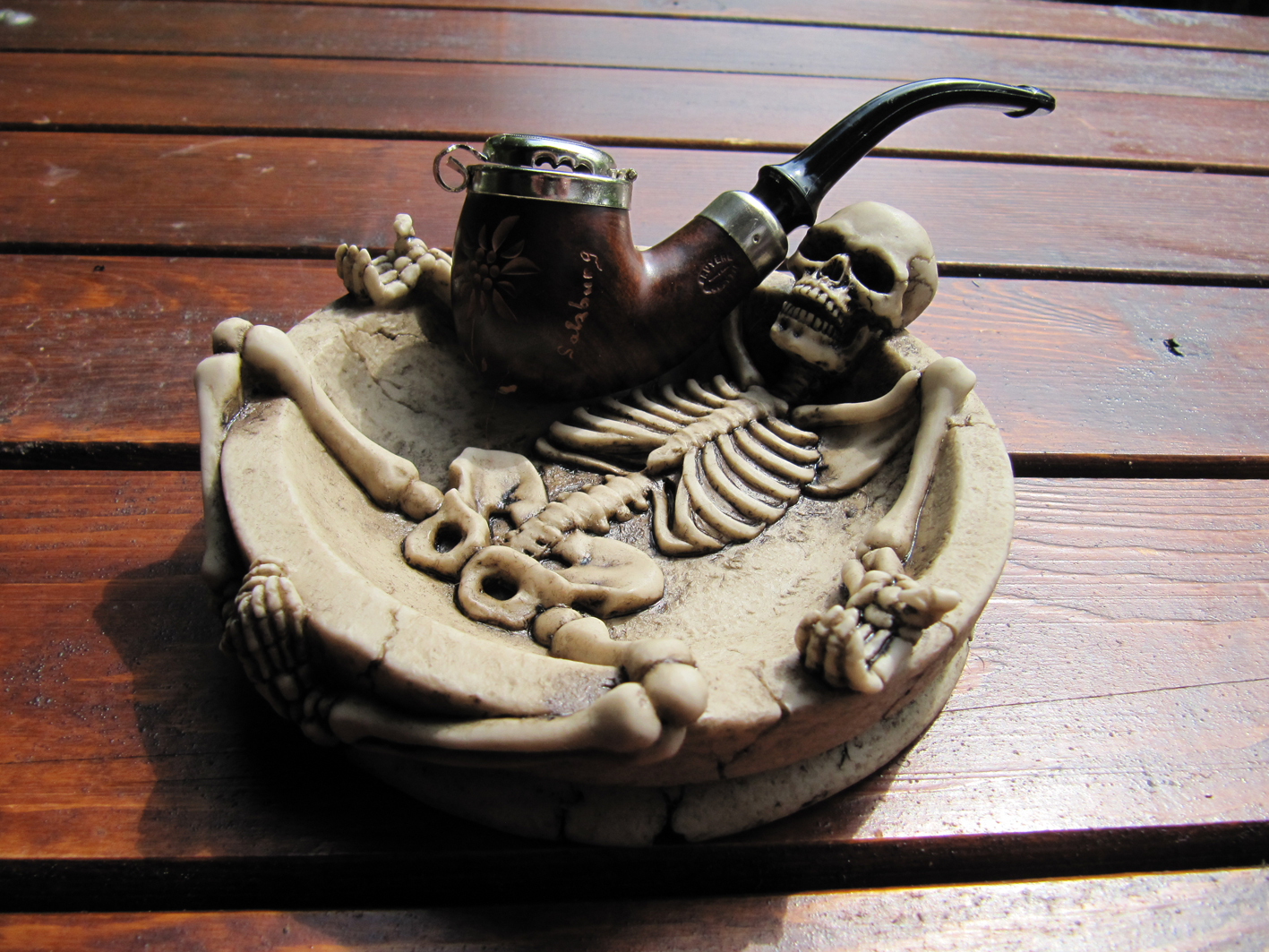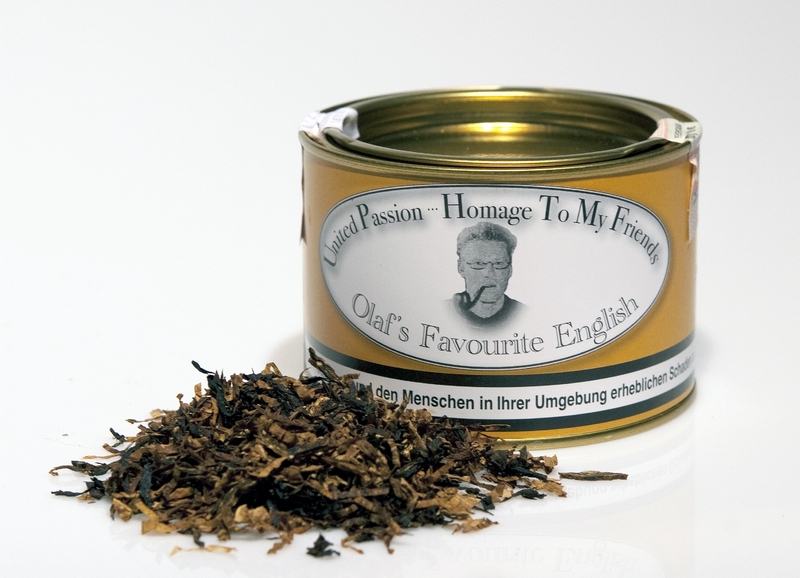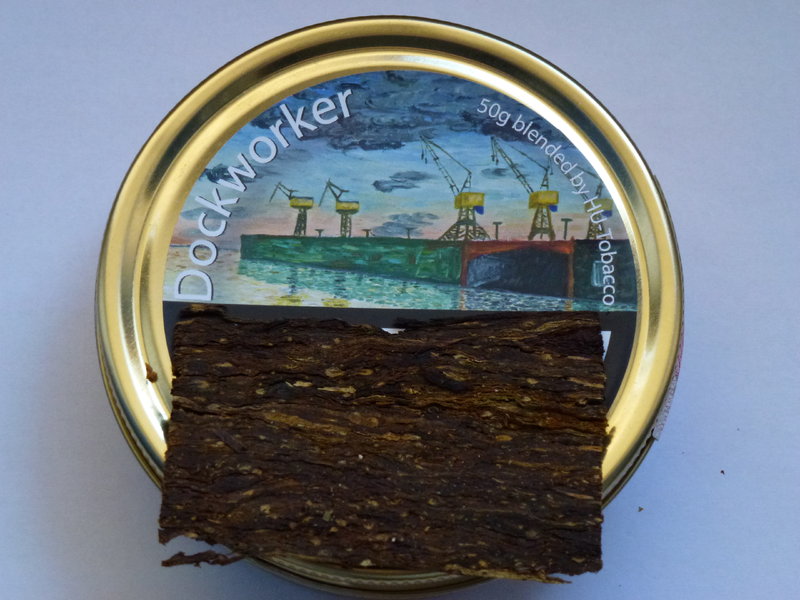 When I first contacted master-blender Hans Wiedemann from HU Tobacco at the beginning of 2012 I asked him if it was possible to receive some samples of his blends. From fellow Dutch pipe-smokers forum members Smoking Rob and Huub I had heard and read some positive things about Hans’ mixtures, so I was very curious. I mainly ordered samples from latakia blends. All blends were good but there were 2 “touchdowns”. One of them was Balkan Passion and the other one Olaf’s Favourite English. It was made by Hans for pipe artist Olaf Langner, who prefers solid English mixtures for his smoking den. That sounds just like my cup of (lapsang souchong) tea!
When I first contacted master-blender Hans Wiedemann from HU Tobacco at the beginning of 2012 I asked him if it was possible to receive some samples of his blends. From fellow Dutch pipe-smokers forum members Smoking Rob and Huub I had heard and read some positive things about Hans’ mixtures, so I was very curious. I mainly ordered samples from latakia blends. All blends were good but there were 2 “touchdowns”. One of them was Balkan Passion and the other one Olaf’s Favourite English. It was made by Hans for pipe artist Olaf Langner, who prefers solid English mixtures for his smoking den. That sounds just like my cup of (lapsang souchong) tea!
 Package: Olaf’s is only available in typical German 100 gram “paint” tins. This because of the lid which resembles that of a paint tin. Ideal if you ask me, because it keeps the tobacco fresh for a long time. I opened my tin half a year ago (I have more tins open and I only smoke 2 pipes a day) and the little tobacco left inside is still as moist as the moment I first popped the lid. On the front is a nice drawing of Olaf and the name of the blend, on the backside a description of the contents. Inside on top of the tobacco is a paper insert with an illustration of a compass on it. The sign the mixture inside was blended and tinned by DTM.
Package: Olaf’s is only available in typical German 100 gram “paint” tins. This because of the lid which resembles that of a paint tin. Ideal if you ask me, because it keeps the tobacco fresh for a long time. I opened my tin half a year ago (I have more tins open and I only smoke 2 pipes a day) and the little tobacco left inside is still as moist as the moment I first popped the lid. On the front is a nice drawing of Olaf and the name of the blend, on the backside a description of the contents. Inside on top of the tobacco is a paper insert with an illustration of a compass on it. The sign the mixture inside was blended and tinned by DTM.
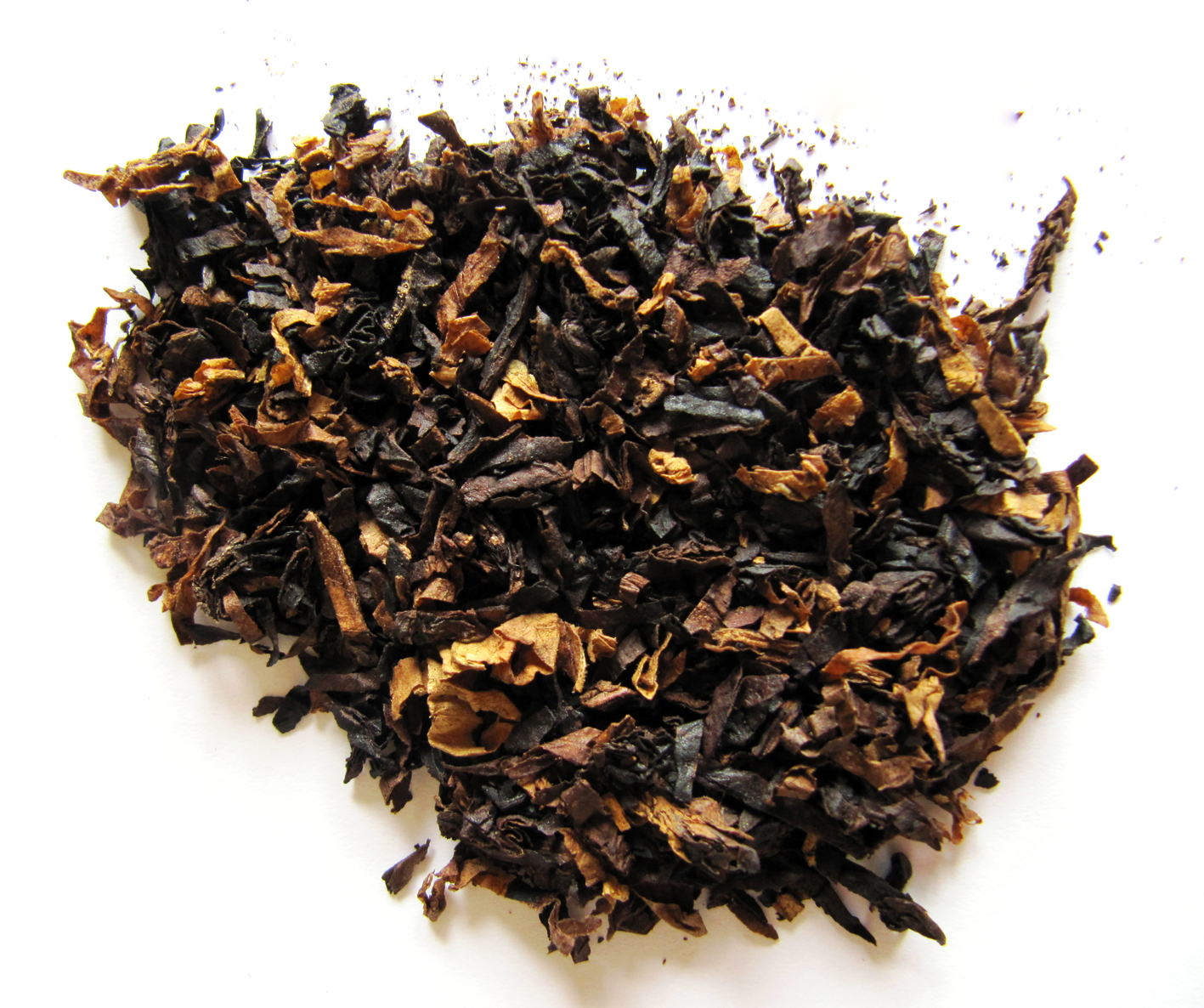 Contents/composition: A sweet base of Virginias, 40% Syrian latakia, 10% Cyprian latakia, perique, quite a bit of Smyrna oriental, darkfired leaf and English black cavendish. Whooo Arno.. In your blog-post Syrian latakia you said that there is almost nothing left of that dark leaf! That is true and despite the contents description there is no Syrian latakia in Olaf’s. I smoked the mixture a couple of times and could not detect the Syrian leaf I know from blends like 3 Oaks Syrian and Wilderness. So I mailed Hans about this and asked if he could verify the use of Syrian latakia. A couple of e-mails further I read that DTM reluctantly acknowledged there was no Syrian dark leaf inside Olaf’s. So from now on 50% Cyprian latakia is used in the blend. Oh, don’t be afraid the taste has changed because of this. I smoked some of a new batch and it was the same as the old one.. The tobacco itself looks dark with some blond strands and is mainly a ribbon cut with some small chunky pieces which make for easy packing.
Contents/composition: A sweet base of Virginias, 40% Syrian latakia, 10% Cyprian latakia, perique, quite a bit of Smyrna oriental, darkfired leaf and English black cavendish. Whooo Arno.. In your blog-post Syrian latakia you said that there is almost nothing left of that dark leaf! That is true and despite the contents description there is no Syrian latakia in Olaf’s. I smoked the mixture a couple of times and could not detect the Syrian leaf I know from blends like 3 Oaks Syrian and Wilderness. So I mailed Hans about this and asked if he could verify the use of Syrian latakia. A couple of e-mails further I read that DTM reluctantly acknowledged there was no Syrian dark leaf inside Olaf’s. So from now on 50% Cyprian latakia is used in the blend. Oh, don’t be afraid the taste has changed because of this. I smoked some of a new batch and it was the same as the old one.. The tobacco itself looks dark with some blond strands and is mainly a ribbon cut with some small chunky pieces which make for easy packing.
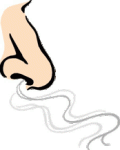 Smell from the tin: A classic latakia mixture smell arises from the opened tin. Sweet, bitter, sour, salty and smoky notes. However, between these I detect something I can’t really define, a bit mushroom like odour. The only blend in which I smelled this before was GL Pease Lagonda.
Smell from the tin: A classic latakia mixture smell arises from the opened tin. Sweet, bitter, sour, salty and smoky notes. However, between these I detect something I can’t really define, a bit mushroom like odour. The only blend in which I smelled this before was GL Pease Lagonda.
 Taste: With a lot of latakia mixtures there is a bitter taste at the charring light. Not with Olaf’s. The latakia makes itself known but does not overpower, it provides a kind of full roundness of taste together with the darkfired leaf in which the Virginias can develop. It is not a latakia-bomb. Halfway the bowl the sourness of the Smyrna takes the upper hand a bit which combines nicely with the underlying Virginias and latakia. I know there is perique in the mixture but I think I get more of the spicy pepper side of it than the fruity side. Although… At three quarters of the bowl the smoky and salty latakia is a bit tuned down by the black cavendish. What I then taste I can best describe as a bit salty liquorice with a honey-sweet edge. Maybe that is caused by the combination of the perique and the black cavendish. In the last bit of the bowl the flavours slowly starting to fade out similar to that of the fading sound a great musical piece and in the end a fine grey ash is left.
Taste: With a lot of latakia mixtures there is a bitter taste at the charring light. Not with Olaf’s. The latakia makes itself known but does not overpower, it provides a kind of full roundness of taste together with the darkfired leaf in which the Virginias can develop. It is not a latakia-bomb. Halfway the bowl the sourness of the Smyrna takes the upper hand a bit which combines nicely with the underlying Virginias and latakia. I know there is perique in the mixture but I think I get more of the spicy pepper side of it than the fruity side. Although… At three quarters of the bowl the smoky and salty latakia is a bit tuned down by the black cavendish. What I then taste I can best describe as a bit salty liquorice with a honey-sweet edge. Maybe that is caused by the combination of the perique and the black cavendish. In the last bit of the bowl the flavours slowly starting to fade out similar to that of the fading sound a great musical piece and in the end a fine grey ash is left.
 Combustibility: Once lit the mixture keeps burning pretty easy with few relights. No comments here.
Combustibility: Once lit the mixture keeps burning pretty easy with few relights. No comments here.
 Room-note: I don’t see my girlfriend Ellen hurrying out of the chamber or coughing violently while I smoke Olaf’s so I guess the room-note is acceptable for a latakia blend. She has smelled worse.
Room-note: I don’t see my girlfriend Ellen hurrying out of the chamber or coughing violently while I smoke Olaf’s so I guess the room-note is acceptable for a latakia blend. She has smelled worse.
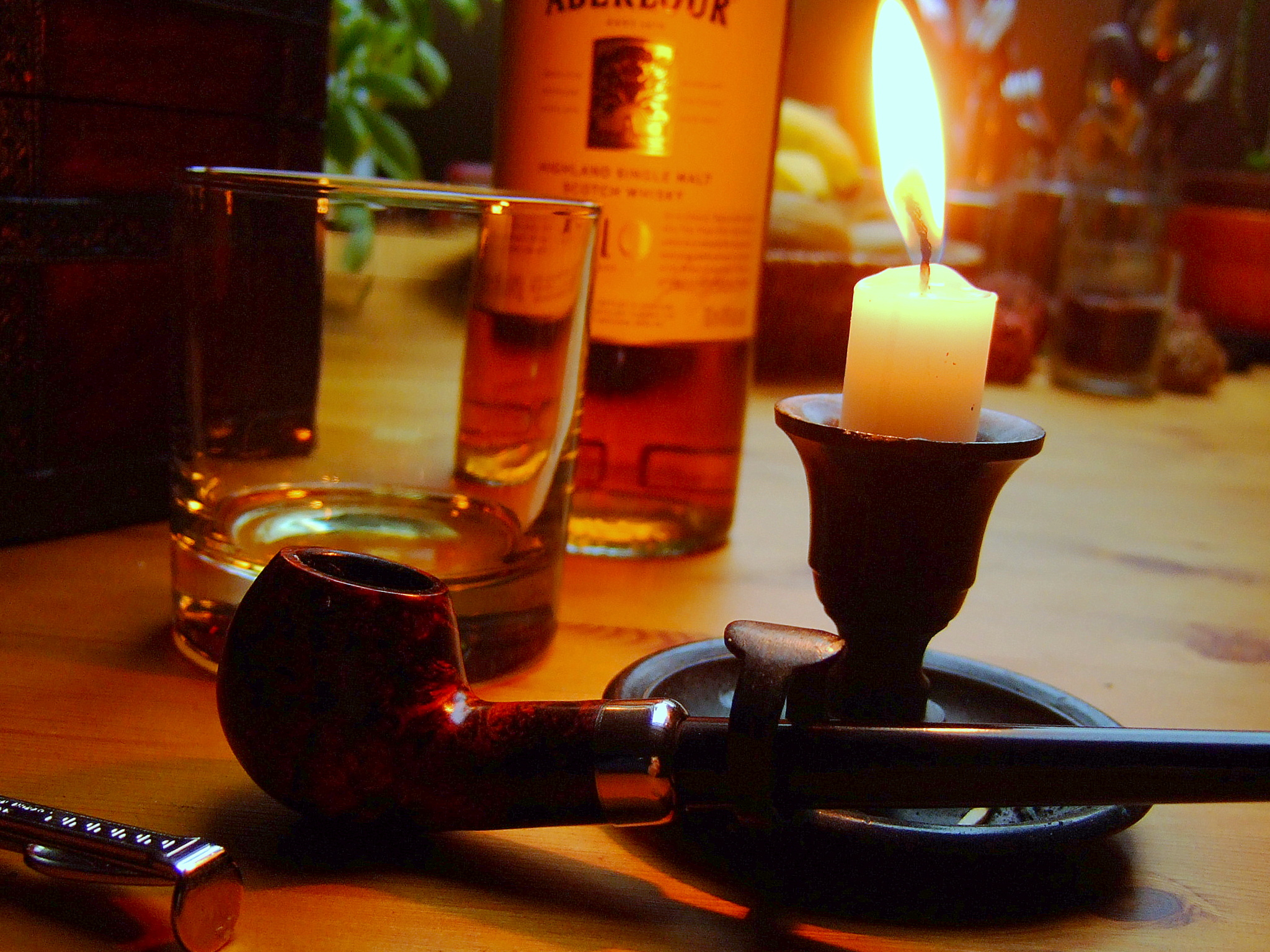 Miscellaneous: Olaf’s benefits from a longer shelving time so the flavours have more opportunity to meld together. Pretty necessary for a complex blend like this one. When I opened my tin it was tinned one year before and I found it good for consumption. However, I am very curious how the mixture will taste after a couple of years of peace in my tobacco closet. The nicotine level is medium, it really is a late night smoke in that regard. Maybe it fits together well with a glass of fine whisky or red wine. Also because of the complex character of the blend I would not advise to smoke it in the morning. One thing that sometimes bothers me a bit about Olaf’s is that now and then it has the tendency to bite in the first part of the bowl. From the other side it could have something to do with my body chemistry on some days.
Miscellaneous: Olaf’s benefits from a longer shelving time so the flavours have more opportunity to meld together. Pretty necessary for a complex blend like this one. When I opened my tin it was tinned one year before and I found it good for consumption. However, I am very curious how the mixture will taste after a couple of years of peace in my tobacco closet. The nicotine level is medium, it really is a late night smoke in that regard. Maybe it fits together well with a glass of fine whisky or red wine. Also because of the complex character of the blend I would not advise to smoke it in the morning. One thing that sometimes bothers me a bit about Olaf’s is that now and then it has the tendency to bite in the first part of the bowl. From the other side it could have something to do with my body chemistry on some days.
 Price: My tin was a bit cheaper but thanks to German tobacco-taxes one 100 gram tin of this wonderful mixture will now cost you €18,35 ($24.21) in Hans’ online shop.
Price: My tin was a bit cheaper but thanks to German tobacco-taxes one 100 gram tin of this wonderful mixture will now cost you €18,35 ($24.21) in Hans’ online shop.
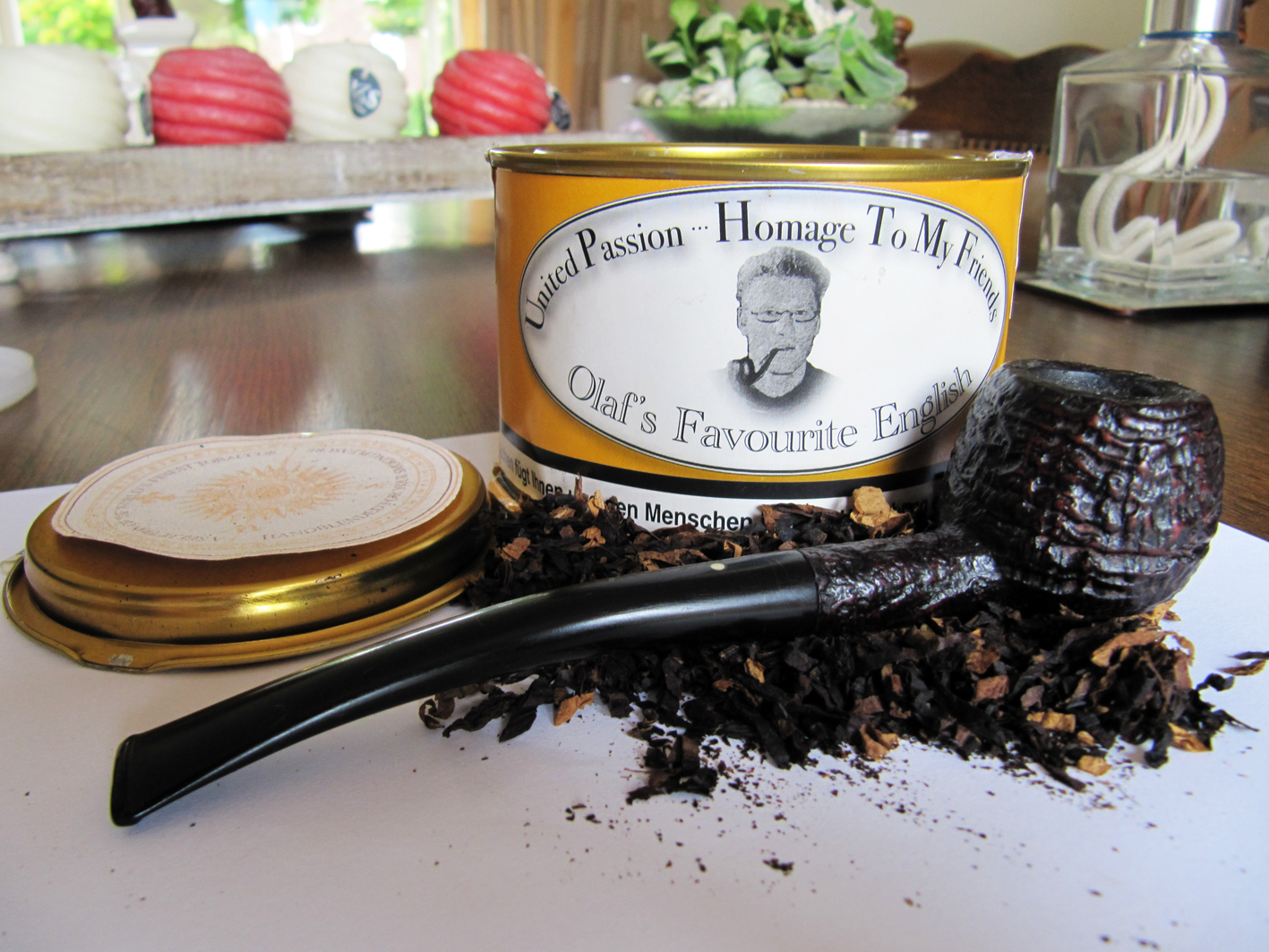 Conclusion: From the first puffs I took from this excellent blend I fell in love with it. For me Olaf’s Favourite English delivers everything I expect from a wonderful English mixture; it is complex but without bragging about it. All the flavours from sweet to smoky to leathery to sour to salty weave throughout the smoke in perfect balance. Personally I think this is one of the best latakia blends on the mainland of Europe and it can easily compete with the finest offerings from blenders like GL Pease.
Conclusion: From the first puffs I took from this excellent blend I fell in love with it. For me Olaf’s Favourite English delivers everything I expect from a wonderful English mixture; it is complex but without bragging about it. All the flavours from sweet to smoky to leathery to sour to salty weave throughout the smoke in perfect balance. Personally I think this is one of the best latakia blends on the mainland of Europe and it can easily compete with the finest offerings from blenders like GL Pease.





